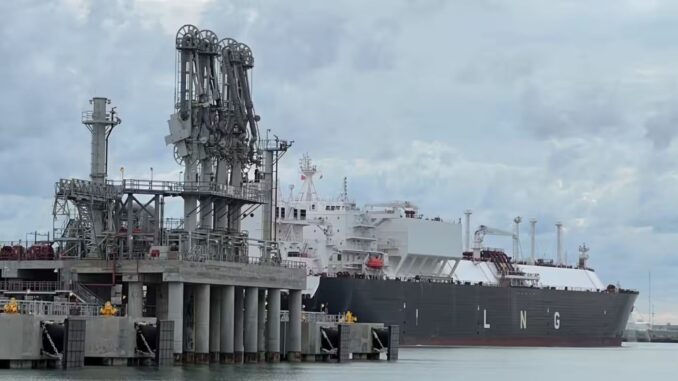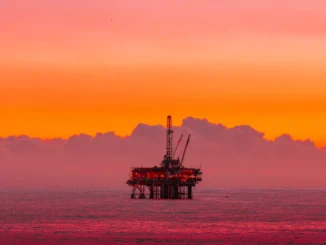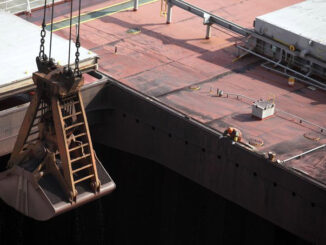
HOUSTON, Texas — Australia’s Woodside Energy Group plans to significantly step up liquefied natural gas (LNG) purchases from North America, as rising costs and other issues make procurement in its home market more challenging.
The company currently procures LNG from a project in Texas, and plans to start buying from Louisiana in around 2028 and Mexico’s west coast in around 2029. It expects to source 4.7 million tonnes of LNG annually from North America at that point, five times current levels and equivalent to almost half the capacity of the production rights it holds in Australia.
“We are interested in North American LNG. We do continue to look at opportunities in the U.S.,” Woodside CEO Meg O’Neill told Nikkei in an interview.
“We have taken steps to increase our trading portfolio,” not just production, she said.
Woodside plans to resell the 1.3 million tonnes of LNG it will receive annually from the Mexico project in Asia. This will allow it to supply energy-hungry East Asian markets without passing through the Panama Canal, which is prone to congestion.
The company is seeking opportunities in western Canada as well. “To produce LNG in the west coast of Canada, that’s about as close as you can get to Japan,” O’Neill said.
The U.S. became the world’s top LNG exporter last year, after rapid growth powered by the shale revolution of the late 2000s enabled the country to pump out cheap gas in huge quantities. European oil companies and commodity trading houses have also been buying more American LNG.
Woodside is shifting more toward North America in light of the difficulty of further expansion in Australia, where the cost of building plants has soared and existing gas fields are running dry. Tighter environmental regulations are also making it more difficult for Woodside to ramp up output in its home market as it has in the past.
Australia was the world’s top LNG exporter between 2019 and 2022, but its exports have peaked, according to research firm Rystad Energy.
The U.S. may end up posing its own challenges. President Joe Biden’s administration in January announced a freeze on approvals for new LNG exports to reassess their climate impact.
U.S. Energy Secretary Jennifer Granholm indicated last week that the pause is expected to end within a year, but O’Neill noted that “uncertainty remains.”
“Whenever the government says ‘we’re calling timeout,’ it’s fully in their control to call time back in,” she said. “And they might go back to as it was, [or] they might put new rules in place.”
Some in the LNG industry speculate that applicants may be required to take measures to prevent methane leaks or install systems to capture carbon dioxide emissions. A big increase in costs could dampen energy companies’ appetite for investment.
“The U.S. has been extremely fortunate to have a tremendous amount of accessible natural gas” that could be used not only “to fuel domestic industry but also exported to support Europe, to support Asian countries, not just in meeting baseline energy needs but helping with decarbonization,” O’Neill said.
“If the world is serious about tackling climate change, we need to be serious about displacing the coal fired power generation that’s currently in use,” she said. “Natural gas has half the life cycle emissions intensity.”
The LNG industry is undergoing a sea change amid the growing global push for decarbonization, and a realignment may be on the cards as companies compete for supply. Woodside had been in talks with compatriot Santos on a merger that would have created one of the world’s biggest LNG players, but said last month that the negotiations had been scrapped.
Take the Survey at https://survey.energynewsbeat.com/
ENB Top News
ENB
Energy Dashboard
ENB Podcast
ENB Substack




